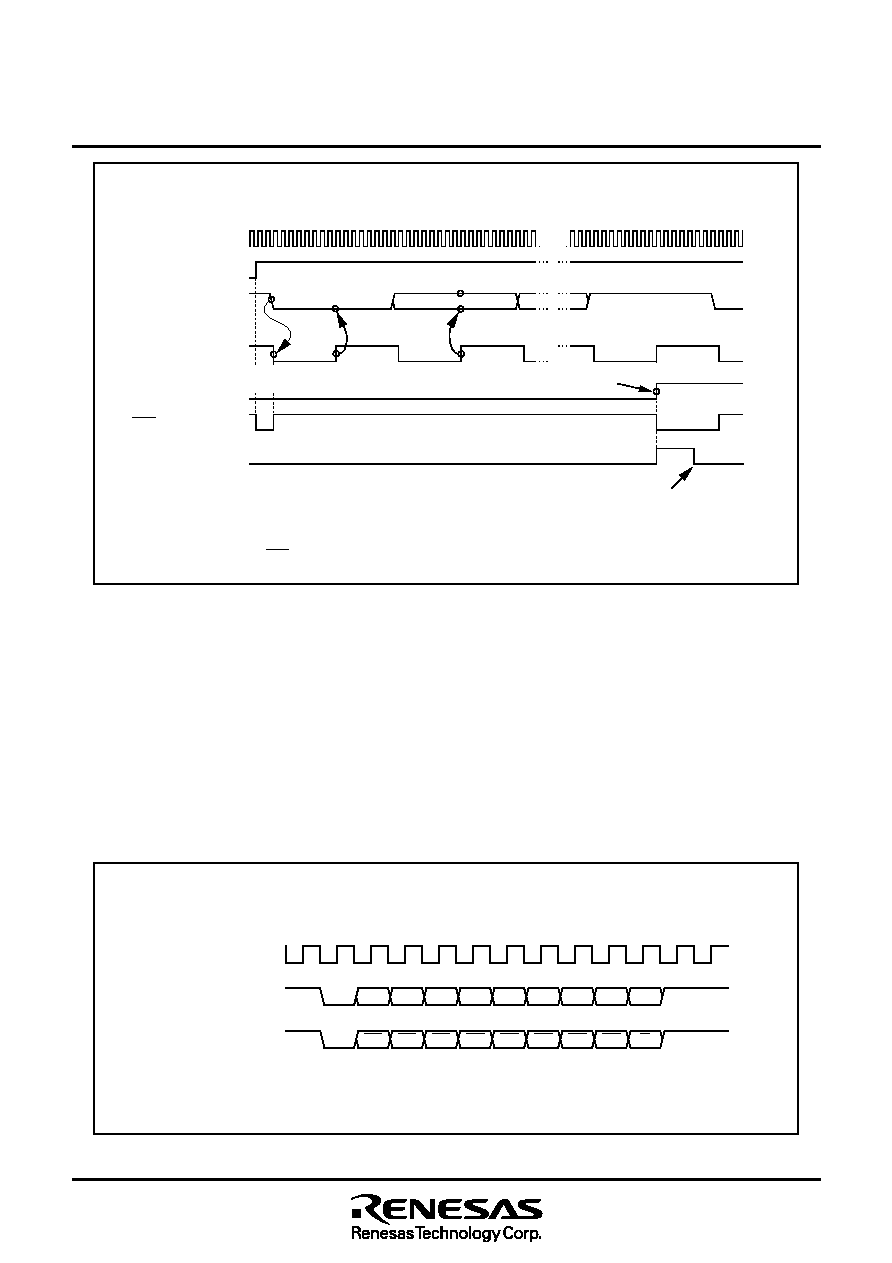- 您現(xiàn)在的位置:買賣IC網(wǎng) > PDF目錄98068 > S1C63455F 4-BIT, MROM, 4.1 MHz, MICROCONTROLLER, PQFP128 PDF資料下載
參數(shù)資料
| 型號: | S1C63455F |
| 元件分類: | 微控制器/微處理器 |
| 英文描述: | 4-BIT, MROM, 4.1 MHz, MICROCONTROLLER, PQFP128 |
| 封裝: | PLASTIC, QFP5-128 |
| 文件頁數(shù): | 19/119頁 |
| 文件大?。?/td> | 865K |
| 代理商: | S1C63455F |
第1頁第2頁第3頁第4頁第5頁第6頁第7頁第8頁第9頁第10頁第11頁第12頁第13頁第14頁第15頁第16頁第17頁第18頁當(dāng)前第19頁第20頁第21頁第22頁第23頁第24頁第25頁第26頁第27頁第28頁第29頁第30頁第31頁第32頁第33頁第34頁第35頁第36頁第37頁第38頁第39頁第40頁第41頁第42頁第43頁第44頁第45頁第46頁第47頁第48頁第49頁第50頁第51頁第52頁第53頁第54頁第55頁第56頁第57頁第58頁第59頁第60頁第61頁第62頁第63頁第64頁第65頁第66頁第67頁第68頁第69頁第70頁第71頁第72頁第73頁第74頁第75頁第76頁第77頁第78頁第79頁第80頁第81頁第82頁第83頁第84頁第85頁第86頁第87頁第88頁第89頁第90頁第91頁第92頁第93頁第94頁第95頁第96頁第97頁第98頁第99頁第100頁第101頁第102頁第103頁第104頁第105頁第106頁第107頁第108頁第109頁第110頁第111頁第112頁第113頁第114頁第115頁第116頁第117頁第118頁第119頁

114
Rev. 1.0
SINGLE-CHIP 16-BIT CMOS MICROCOMPUTER
with DATA SLICER and ON-SCREEN DISPLAY CONTROLLER
MITSUBISHI MICROCOMPUTERS
M306H1SFP
(2) Function for switching serial data logic (UART2)
When the data logic select bit (bit 6 of address 037D16) is assigned 1, data is inverted in writing to the
transmission buffer register or reading the reception buffer register. Figure 2.11.20 shows the ex-
ample of timing for switching serial data logic.
Figure 2.11.20 Timing for switching serial data logic
ST : Start bit
P : Even parity
SP : Stop bit
D0
D1
D2
D3
D4
D5
D6
D7
P
SP
ST
SP
ST
D3
D4
D5
D6
D7
P
D0
D1
D2
Transfer clock
TxD2
(no reverse)
TxD2
(reverse)
“H”
“L”
“H”
“L”
“H”
“L”
When LSB first, parity enabled, one stop bit
Example of receive timing when transfer data is 8 bits long (parity disabled, one stop bit)
D0
Start bit
Sampled “L”
Receive data taken in
BRGi count
source
Receive enable bit
RxDi
Transfer clock
Receive
complete flag
RTSi
Stop bit
“1”
“0”
“1”
“H”
“L”
The above timing applies to the following settings :
Parity is disabled.
One stop bit.
RTS function is selected.
Receive interrupt
request bit
“0”
“1”
Transferred from UARTi receive register to
UARTi receive buffer register
Reception triggered when transfer clock
is generated by falling edge of start bit
D7
D1
Cleared to “0” when interrupt request is accepted, or cleared by software
Figure 2.11.19 Typical receive timing in UART mode
(1) Sleep mode (UART0, UART1)
This mode is used to transfer data between specific microcomputers among multiple microcomputers
connected using UARTi. The sleep mode is selected when the sleep select bit (bit 7 at addresses
03A016, 03A816) is set to “1” during reception. In this mode, the unit performs receive operation when
the MSB of the received data = “1” and does not perform receive operation when the MSB = “0”.
相關(guān)PDF資料 |
PDF描述 |
|---|---|
| S1C63455D | 4-BIT, MROM, 4.1 MHz, MICROCONTROLLER, UUC105 |
| S1C63458F0A0100 | MICROCONTROLLER, PQFP144 |
| S1C63466D | 4-BIT, MROM, 4.1 MHz, MICROCONTROLLER, UUC140 |
| S1C63466F | 4-BIT, MROM, 4.1 MHz, MICROCONTROLLER, PQFP144 |
| S1C63567F0A0100 | MICROCONTROLLER, PQFP144 |
相關(guān)代理商/技術(shù)參數(shù) |
參數(shù)描述 |
|---|---|
| S1C63557D04Q000 | 制造商:Seiko Instruments Inc (SII) 功能描述:EPSON MCU 4BIT |
| S1C63567 | 制造商:EPSON 制造商全稱:EPSON 功能描述:4-bit Single Chip Microcomputer |
| S1C63616 | 制造商:EPSON 制造商全稱:EPSON 功能描述:4-bit Single Chip Microcomputer |
| S1C63632 | 制造商:EPSON 制造商全稱:EPSON 功能描述:4-bit Single Chip Microcomputer |
| S1C63653 | 制造商:EPSON 制造商全稱:EPSON 功能描述:CMOS 4-bit Single Chip Microcontroller |
發(fā)布緊急采購,3分鐘左右您將得到回復(fù)。